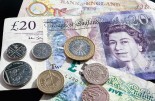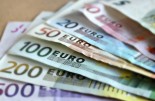Monex: Markten positief gestemd, EUR/USD wint terrein
Monex: Markten positief gestemd, EUR/USD wint terrein

Hieronder volgt een commentaar in het Engels van Ranko Berich, Head of Research bij Monex Europe op de Amerikaanse dollar, euro en het Britse pond.
USD
The dollar trades on the back foot this morning as the global coronavirus curve continued to flatten over the weekend, enabling governments to begin eyeing up exit plans. This morning the Australian Dollar leads gains against the greenback after two states eased lockdown measures. In Queensland, stay-at-home restrictions will be eased from May 1st, while Western Australia will allow indoor and outdoor gatherings of up to 10 people from Monday. The move is akin to the New Zealand dollar last week, which rallied on the news that lockdown measures were set to end sooner than expected, while the euro is also higher this morning on news that Spain, France and Italy will follow in Germany’s footsteps last week in gradually opening up the economy again in the first weeks of May. With the US fighting the virus with a couple of week’s lag on select European countries due to its relatively delayed onset, the US economy remains in contractionary territory. This may weigh on the dollar in the coming weeks as major counterparts begin to show signs of relieving the economically damaging measures. Increased stimulus measures from the Bank of Japan today are also pushing the dollar lower this morning as risk sentiment is boosted by the BoJ embarking on unlimited QE, restarting its 2006 T-bill scheme and purchasing increased amounts of corporate debt. While monetary easing normally leads to currency weakness, in such an environment as this with rates at record lows across the board, growth dynamics will play a key role in currency valuations. The BoJ’s steps add to a swathe of growth stimulus seen globally over the last month, helping global growth to return to pre-virus levels and thus boosting risk sentiment this morning. The data calendar is light for the dollar today, with only retail sales revisions and the Dallas Fed manufacturing survey for April due out at 15:00 and 15:30 BST. The main events for the dollar this week are the Q1 GDP advanced reading on Wednesday just prior to the FOMC meeting in the evening, along with jobless claims due on Thursday - the last batch prior to next week’s nonfarm payrolls release.
EUR
The single currency is also enjoying the renewed risk climate seen in the G10 space today, buoyed by economic stimulus in the APAC region this morning. Similar to that seen in Australia, European governments are toying with exit plans for the coming weeks as the health data continues to show an improving picture in some of the worst-hit countries such as Spain and Italy. Similar to that seen in Germany last week, Spain and Italy are discussing opening up their economies again in the first weeks of May should the data continue to improve, however, the decision has already been made in Italy to keep schools closed until September. In France, the economy is set to gradually reopen from May 11th, but no decision has been made as of yet on bars and restaurants. This isn’t to be expected until the end of next month, similar to that in Italy and Spain as governments try to avoid groupings of large crowds. Central banks feature heavily this week, with the ECB pencilled in for Thursday after ramping up its QE program last month with the announcement of a further €750bn of bond-buying. In the absence of the Eurogroup putting forward a credible joint fiscal approach, many expect the ECB to ramp up its QE program further in order to fill the gap in the interim while calling for increased fiscal support. Prior to the ECB’s meeting, the market will get information on Germany’s labour market along with the first reading of the bloc’s Q1 GDP, which is expected to come in at -3.3% YoY.
GBP
Sterling is enjoying the risk rally this morning in the G10 space, up just over half a percentage point at the time of writing. This morning, Boris Johnson returns to work as doctors sign off on the Prime Minister’s return to Number 10 after three week’s battling the illness. Johnson is expected to chair this morning’s 09:15 BST “war cabinet” meeting, where ministers will decide on the UK’s exit plan going forward. The Prime Minister is expected to announce plans for re-opening the economy in the coming fortnight with the task being the defining moment of his political career, according to some of his allies. The cabinet is currently split between those more concerned about the health service and those focused on the economic impacts of social distancing. The decision is a difficult one to balance, but one that needs doing regardless. This morning, the Financial Times reports that the Bank of England’s Prudential Regulation Authority is in contact with top banking executives in a bid to curb UK lenders from booking huge charges on souring loans. The move by the PRA comes after lenders in the US and Credit Suisse, the first to report in Europe, raised their reserves dramatically to buffer against the likely rise in defaults. The six largest US banks raised reserves by a combined $24.5bn, a 350% increase, while Credit Suisse raised reserves by a whopping 600%. Similar moves by UK lenders would clog the transmission of credit and lower rates to the real economy, exacerbating the economic impacts of the virus on the economy and undoing monetary stimulus released by the BoE. The data calendar is light for the pound, with advanced PMIs and initial retail data being the main feature.










